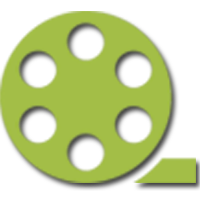We’ve all heard of it: breast cancer. It’s a disease that doesn’t discriminate, affecting millions worldwide. It’s a terrifying word that can shake us to our core. But here’s the thing: it doesn’t have to be a death sentence. It’s crucial to understand that early detection can make all the difference. Knowledge is power, folks, and the more we know about this disease, the better equipped we’ll be to fight it.
In this article, we’re going to discuss everything you need to know about breast cancer and how to avoid it. We’ll dive deep into the subject, shedding light on the different types of breast cancer, the risk factors, and most importantly, the preventive measures. So sit tight, grab a cup of coffee, and let’s get started on this journey together. Your health matters, and we’re here to help you protect it.

Types of Breast Cancer
Now, let’s delve into two specific types of breast cancer that you might not be too familiar with: Ductal Carcinoma and Lobular Carcinoma. These aren’t just big medical words. They’re unique to each individual’s journey with breast cancer. Ductal Carcinoma starts in the milk ducts, while Lobular Carcinoma begins in the milk-producing lobules. Understanding these types can help us better navigate the complexities of breast cancer.
Ductal Carcinoma
Steering our journey deeper into the realm of breast cancer, let’s focus on a type that’s quite common, known as Ductal Carcinoma. Now, you might wonder, “What’s this all about?” Well Ductal Carcinoma is a form of breast cancer that starts in the milk ducts, which carry milk from the lobules to the nipple.
There are two types: Ductal Carcinoma In Situ (DCIS) and Invasive Ductal Carcinoma (IDC). DCIS is a non-invasive cancer where abnormal cells have been found in the lining of the breast milk duct but haven’t spread beyond that.
Lobular Carcinoma
Shifting our focus to another type of breast cancer, let’s dive into the world of Lobular Carcinoma. You might not know, but this cancer starts in the milk-producing glands, also known as lobules. It’s like an uninvited guest, stealthily developing without any tell-tale lump. Unlike the more common Ductal Carcinoma, Lobular Carcinoma has a unique flair – it often affects both breasts. Imagine it as a mirror image, a reflection of sorts. It’s a rare type, but don’t be fooled; it doesn’t make it any less serious. Remember, knowledge is your best defense. So, let’s keep learning and fighting together, shall we?
Risk Factors
Next, let’s focus on Age and Family History, two key factors that significantly influence our risk. As we age, our bodies change, and so do our vulnerabilities. We can’t control our age or family history, but being aware of these factors can help us take proactive measures. It’s essential to note some risks may be inherited. If certain conditions run in your family, you might be more prone to them. So, it’s crucial to know your family’s health history. Most of what we shared here has been derived by the governmental institution CDC.
Age
Shifting gears from the different types of breast cancer, let’s delve into the Risk Factors that make you more susceptible to this disease. The first factor we’ll touch on is age. You might not realize it, but as you get older, your risk of developing breast cancer increases. It’s a sobering fact, but most breast cancers are diagnosed after the age of 50. This doesn’t mean that you’re off the hook if you’re younger, though. We all need to be aware of our bodies and any changes that occur. So, ladies, let’s not forget to pay attention to our health as we age. It’s never too early or too late to start.
Family History
Having discussed the various types of breast cancer, let’s now delve into the potential risk factors that might elevate your odds of developing this condition. One significant aspect to consider is your family history. If breast cancer runs in your family, you’re likely at a higher risk. This is because you may have inherited genes, such as BRCA1 or BRCA2, that are known to increase susceptibility to breast cancer. However, it’s essential to remember that not having a family history doesn’t exempt you from this risk. It’s just one piece of the puzzle, and there are other factors that we’ll explore in the next sections.
Early Detection and Prevention
We’ve now covered the basics of early detection and prevention. Let’s move on to something more specific: breast awareness. Ladies, it’s about knowing what’s normal for you so any changes can be noticed. Equally crucial are regular screening tests. They’re not about finding something wrong but rather ensuring everything’s right. We’ll dive into why these two areas are so important and how they can make a real difference.
Breast Awareness
Shifting gears from the risk factors, let’s take a moment to realize that you hold the power in your hands. Breast awareness is your first line of defense. It’s not about fearing the worst. It’s about knowing your body and being in tune with any changes. You can’t prevent breast cancer, but you can spot it early. How? By regularly checking your breasts for any abnormalities, lumps, or changes in size, shape, or skin texture. You shouldn’t brush off any strange sensations, either. It’s a simple thing you can do for yourself starting today. Remember, you matter.
Regular Screening Tests
Having navigated the choppy waters of risk factors, let’s anchor ourselves in the safe harbor of prevention. Now, onto the topic of Regular Screening Tests. You see, it’s like clockwork. Making sure you’re getting regular screenings can be a game changer. Don’t underestimate the power of a mammogram; it’s your frontline defense. It can spot cancer up to three years before it can be felt. Now, here’s a nugget of wisdom: women aged 50 to 74 should have a mammogram every two years. But always remember, everyone is unique, so please discuss your screening plan with your doctor. Prevention is a gem that can save your life!
Treatment Options
In our journey exploring Treatment Options, let’s delve into two crucial paths that could potentially change your life. First, we’ll dissect Surgery, a hands-on approach that can often seem daunting. Rest assured, I’ll be here to break it down for us. Then, we’ll shine a light on Radiation, another key player. It’s a unique process, and we’ll navigate its intricacies together. Buckle up, because we’re about to enter a world of high-tech healing!
Surgery
While early detection and prevention are vital, it’s equally important to understand the treatment options available if you’re diagnosed with breast cancer. Let’s dive deep into the world of surgery. This isn’t just a single procedure, but a whole list of options designed specifically for your unique condition. You may undergo a lumpectomy or a mastectomy, depending on the size and location of the tumor. It’s not an easy decision to make, but remember, you’re not alone in this. Your doctor will guide you through each step, ensuring you’re comfortable with the process. Bear in mind, surgery is just one piece of the puzzle in your treatment journey.
Radiation
Just as the dawn breaks after a dark night, finding out you have breast cancer isn’t the end of the road. There are various treatment options at your disposal. One such option is radiation therapy. Radiation isn’t as scary as it sounds, trust me. It’s simply a way to target and kill those rogue cancer cells. You’ll typically have sessions over several weeks. But don’t worry, we can work around your schedule. And yes, there might be side effects, but we’ll be right there to help you manage them. Just remember, it’s all in the name of getting you back to health.
Support Resources
Moving on, let’s tackle the first subtopic, Support Groups. These are unique spaces where we can openly share our struggles and triumphs with people who truly understand. They’re like a lifeline when things get tough. Now, onto Online Communities. In this digital era, they’re a gem that allow us to connect with others from all corners of the globe. It’s comforting to find a community online, where you can find support 24/7. Isn’t it amazing how these support resources can help us cope, grow, and even thrive in our journey?
Support Groups
While navigating through the maze of treatment options, remember that you’re not alone on this journey. Support Groups could be your compass, guiding you through the fog of uncertainty. These groups are made up of people who’ve been where you are. Here’s the incredible part: they’re ready to share their experiences, to listen to your fears, and to help you find your way. And yes, they understand what you’re going through because they’ve been there too. It’s not just about the medical advice, it’s about the emotional support that we all need when we’re dealing with something as challenging as breast cancer. Think about it, wouldn’t it be comforting to walk this path with others who understand your journey?

Online Communities
While the journey through treatment options can often feel isolating, you should remember that you’re not alone. The internet has made it possible for us to connect with others who are going through similar experiences. Online communities are now at the forefront of providing solace and support. These platforms offer a unique chance for you to share your fears, triumphs, and struggles. Connecting with others who understand your journey can be a source of great comfort. Remember, your experience is unique, but you are part of a larger community that’s here to support you. So, don’t hesitate to reach out and join these online communities.
The Role of Research
Through my personal journey in research, I’ve found that genetics and nutrition play a monumental role. They’re like two sides of a coin, each unique, but intrinsically linked. Genetics helps us understand our body’s unique blueprint, while nutrition shows how our choices can impact this blueprint. Isn’t it fascinating to realize that our genes aren’t our destiny, but our diet can be? This dynamic duo of genetics and nutrition is indeed a game-changer in research!
Genetics
Stepping away from the supportive resources, let’s dive into the pool of exploration that is research. Genetics, my friends, plays a significant role in breast cancer research. It’s like a complex puzzle, and each piece we discover helps us understand the bigger picture. Genetic mutations, for instance, can significantly increase a person’s risk of developing breast cancer. We’re also investigating how these mutations can affect the course of the disease. It’s like we’re on a treasure hunt, searching for clues that will lead us to a deeper understanding of breast cancer. Stay tuned, as we continue to unearth these precious gems of knowledge.
Nutrition
While the resources available for dealing with breast cancer are invaluable, it’s crucial to understand the role of research in this field, particularly in nutrition. Studies have shown that what we consume can significantly impact our breast health. Nutrition plays a pivotal role in our fight against this disease, with certain foods acting as natural warriors in our bodies. Whether it’s the antioxidants in fruits and vegetables, the healthy fats in fish, or the fiber in whole grains, every bite is a chance for us to strengthen our bodies. So, let’s embrace the power of nutrition, because we’re not just what we eat, but how well we fight!
Advances in Technology
Now, let’s delve into something truly fascinating – Imaging Techniques and Diagnostic Tests. We’ve come a long way, thanks to advances in technology. No longer do we rely on guesswork or invasive procedures. Today, we have cutting-edge imaging tools and precise diagnostic tests that give us a peek into the human body like never before. Isn’t it amazing how technology has revolutionized healthcare? Buckle up, we’re about to explore this incredible journey.
Imaging Techniques
While we’ve delved into the importance of research, let’s pivot our focus to the incredible advances in technology that are transforming the way we detect and diagnose breast cancer. When it comes to imaging techniques, we’re witnessing a revolution. Traditional mammograms are still invaluable, but we’ve got more tools in our box now. High-resolution ultrasound, MRI scans, and 3D mammography, to name a few. They’re not just fancy names, y’know. These cutting-edge technologies can spot cancerous cells even before any physical symptoms appear. That’s right, we’re catching cancer at its earliest stages, and it’s changing the game. This is the power of modern technology, folks.
Diagnostic Tests
After understanding the pivotal role research plays in breast cancer, let’s now turn our attention to the equally significant role of technology, focusing on diagnostic tests. These tests are our unsung heroes in the fight against breast cancer. They’ve undergone such a transformation over the years, you wouldn’t believe it. Nowadays, we’re not just looking for cancer cells, we’re identifying them, studying them, and understanding them. We’re even able to pinpoint their exact location and size. Isn’t that incredible? This level of detail in diagnosis wasn’t possible a few decades ago. I say, let’s raise a toast to the technological advancements that have made these tests so accurate and reliable.
Raising Awareness
Raising awareness is crucial, particularly about sensitive topics like breast cancer. Let’s delve into education first: it’s the core foundation, equipping us with knowledge about the disease. Then, we’ll move onto social media, a powerful tool in spreading the word far and wide. Lastly, we’ll touch on lifestyle changes. Believe it or not, simple tweaks in our daily routines can drastically reduce risk. So, let’s get started, shall we?
Education
While advances in technology have given us an upper hand, it’s time we shifted gears to something just as important – educating ourselves. Knowledge, after all, is power. In the fight against breast cancer, education is a crucial weapon in our arsenal. It’s not just about knowing what breast cancer is; it’s about understanding the risk factors, the importance of early detection, and the ways to prevent it. It’s high time we all understood that prevention is better than cure. So, let’s roll up our sleeves and dive into the wealth of information available to us, because when it comes to breast cancer, staying ignorant is not an option.
Social Media
While advances in technology are revolutionizing the way we tackle breast cancer, it’s equally important to shine a spotlight on how we can keep the conversation going. That’s where social media steps into the spotlight. Through platforms like Facebook, Twitter, and Instagram, we’re not just sharing selfies, we’re sharing vital information about breast cancer too. These platforms allow us to spread the word about early detection and prevention. We’re able to reach out, educate, and inspire. So, don’t underestimate your power to make a difference. Every post, every share, every conversation about breast cancer can make an impact. Let’s turn our online presence into a powerful tool for raising awareness.
Lifestyle Changes to Reduce Breast Cancer Risk
As we’ve marveled at the wonders of technology, it’s time to shift our attention to us. Yes, that’s right, let’s talk about what we can do personally to minimize the risk of breast cancer. We’re not helpless in this fight, folks. Small lifestyle changes can make a big difference. Let’s chuck out those cigarettes, embrace a balanced diet and say a big “yes” to regular exercise. Remember, prevention is better than cure, so let’s take care of our bodies. It’s our first line of defense against breast cancer. Stand up to cancer with healthy living.
In conclusion, there’s a lot we can do to fight breast cancer. It’s all about being aware and proactive. We can’t ignore the importance of early detection and prevention, paired with the latest advancements in technology and research.
Remember, we’re not alone in this fight. There’s a wealth of support resources to lean on. We’ve got to keep raising awareness and sharing our knowledge. Together, we are stronger. Let’s beat breast cancer!



